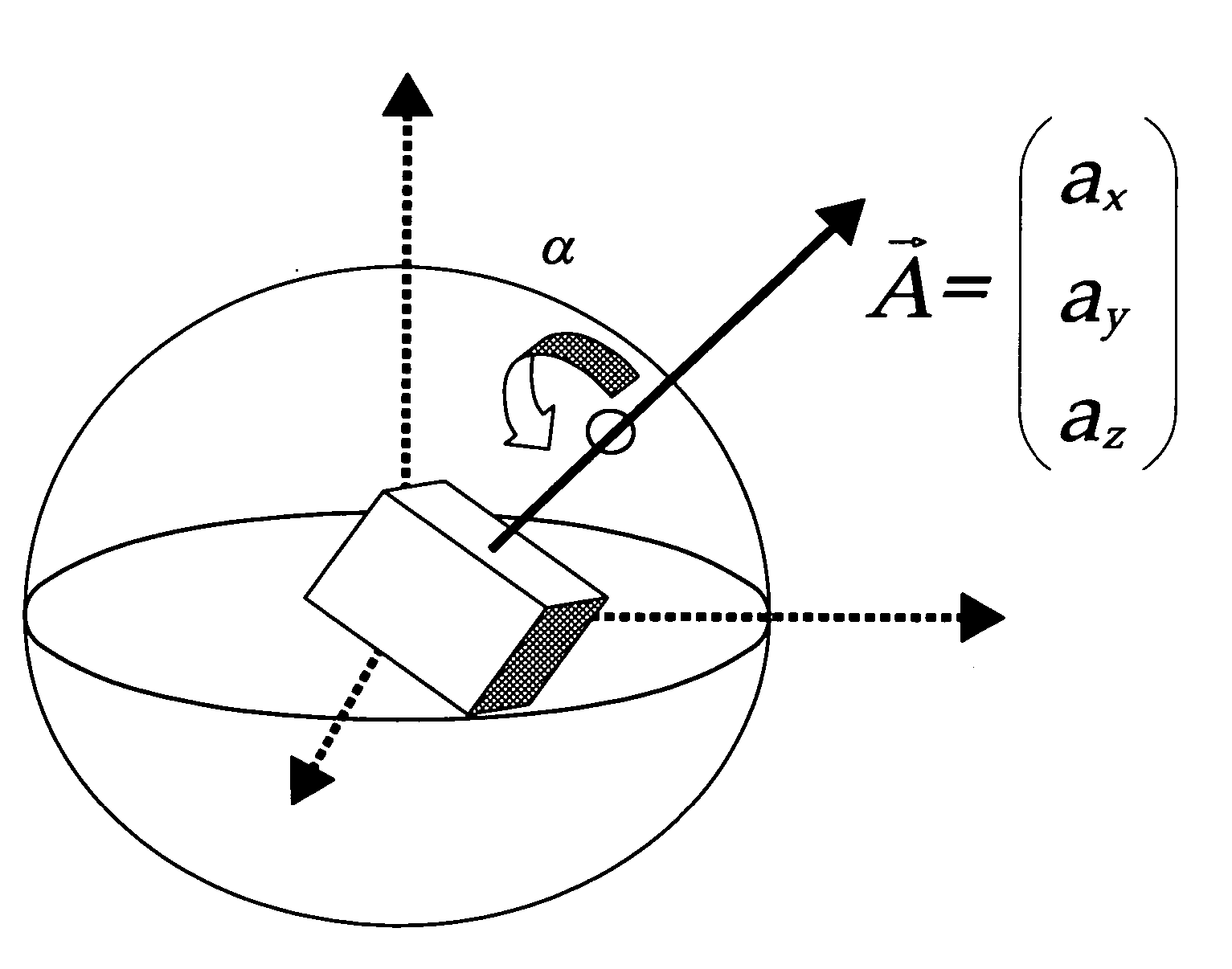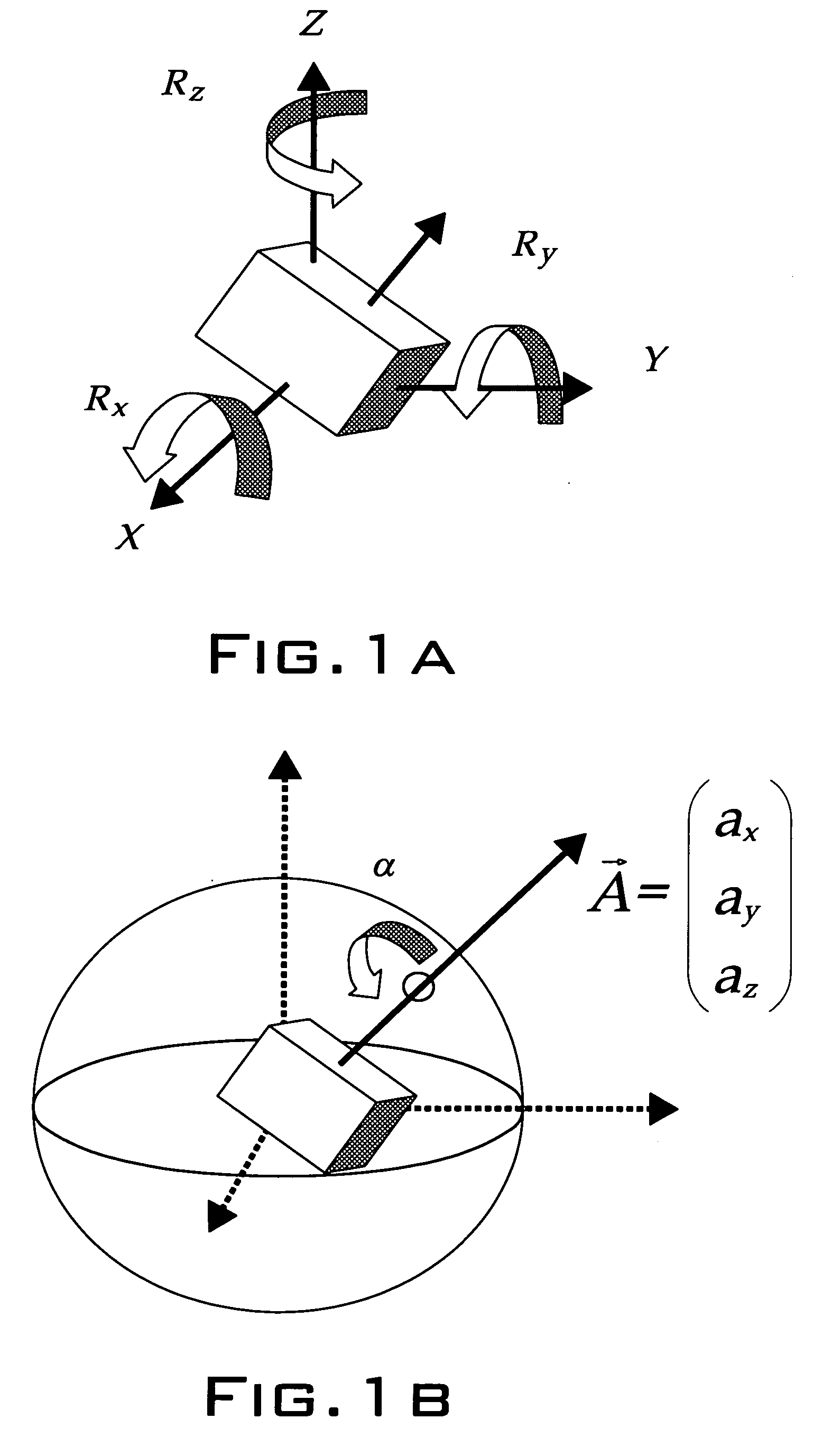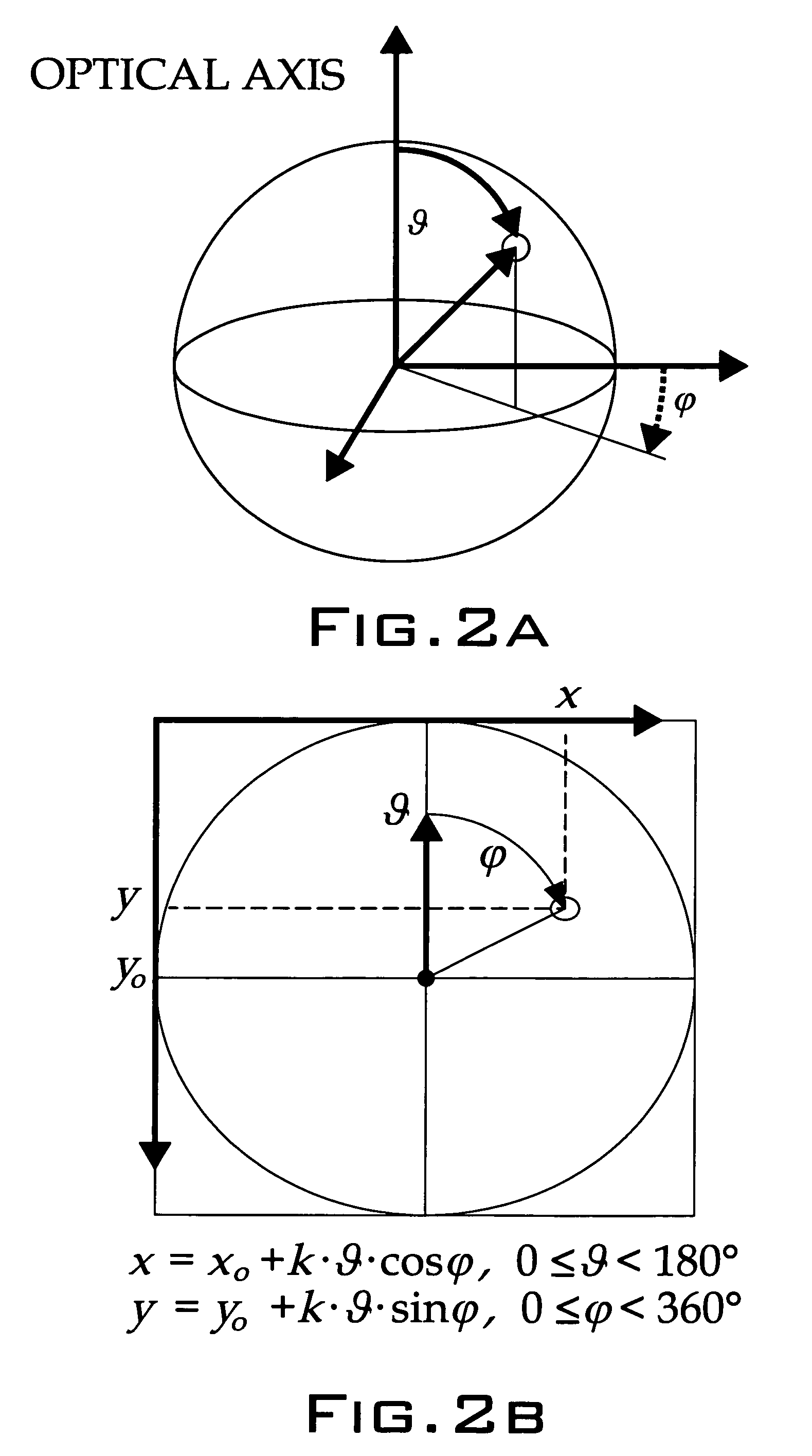Method for the rotation compensation of spherical images
- Summary
- Abstract
- Description
- Claims
- Application Information
AI Technical Summary
Benefits of technology
Problems solved by technology
Method used
Image
Examples
Embodiment Construction
[0023] The fundamental prerequisite for performing the method according to the invention is the rigid coupling of a spherical camera with a 3DoF (Degree of Freedom) rotation sensor.
[0024] In order to simplify explanations, reference is only made hereinafter to a single fisheye camera which images a hemisphere. For all-around viewing, the method is simultaneously used for both cameras, and the inventively stabilized images are then joined together in a known manner.
[0025] The camera pixel plane requires a two-dimensional coordinate system in 3D space. The pixel plane orientation is random. Technical CCD chips normally have square pixels in a rectangular arrangement, so the Cartesian coordinate system (x, y) is the natural choice. Its origin is typically in a corner pixel.
[0026] Through the spherical projection of the fisheye, object points are imaged on a hemisphere (of radius one) around the camera center on a circular disk in the pixel plane. The natural coordinates of the image...
PUM
 Login to View More
Login to View More Abstract
Description
Claims
Application Information
 Login to View More
Login to View More - R&D
- Intellectual Property
- Life Sciences
- Materials
- Tech Scout
- Unparalleled Data Quality
- Higher Quality Content
- 60% Fewer Hallucinations
Browse by: Latest US Patents, China's latest patents, Technical Efficacy Thesaurus, Application Domain, Technology Topic, Popular Technical Reports.
© 2025 PatSnap. All rights reserved.Legal|Privacy policy|Modern Slavery Act Transparency Statement|Sitemap|About US| Contact US: help@patsnap.com



